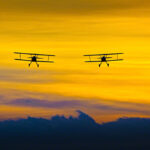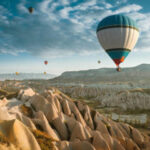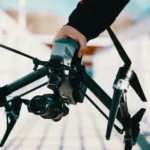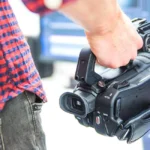
High-altitude cinematography is a captivating and awe-inspiring genre of filmmaking that allows filmmakers to capture breathtaking vistas and unique perspectives from great heights.
Whether it’s soaring above mountain peaks, gliding through the clouds, or observing wildlife from the sky, high-altitude cinematography offers a mesmerizing visual experience that takes audiences on a thrilling journey.
In this article, we will explore the world of high-altitude cinematography, discussing its techniques, equipment, and the incredible footage it produces.
The Art of High-Altitude Cinematography
High-altitude cinematography involves filming scenes from elevated positions, often in aircraft, helicopters, drones, or even hot air balloons.
This technique provides filmmakers with a bird’s-eye view of the landscape, creating stunning visuals that are both immersive and exhilarating.
It offers a unique perspective that is impossible to achieve from the ground, allowing viewers to see the world in a whole new way.
Techniques and Challenges
Aerial Filming: Aerial cinematography is one of the primary techniques used in high-altitude filmmaking. It involves mounting cameras on helicopters, planes, or drones to capture sweeping shots of landscapes, cities, and events from above. Stable platforms and specialized gyroscopic equipment are essential for obtaining steady shots at high altitudes.
Drone Cinematography: Drones have revolutionized high-altitude cinematography by providing a cost-effective and flexible means of capturing stunning aerial shots. They can access tight spaces and fly at various altitudes, making them ideal for a wide range of cinematic applications.
Helicopter Filming: Helicopters offer filmmakers the ability to hover in place, change altitude rapidly, and execute dynamic maneuvers, making them well-suited for capturing fast-paced action sequences or tracking subjects across vast landscapes.
Safety Considerations: Filming at high altitudes presents unique challenges, including reduced oxygen levels, extreme temperatures, and unpredictable weather conditions. Safety precautions, proper training, and careful planning are crucial to ensure the well-being of the crew and the success of the shoot.
Equipment
Cameras: High-quality cameras with advanced image stabilization capabilities are essential for achieving steady and sharp footage at high altitudes. Cinematographers often use professional-grade cameras capable of shooting in 4K or higher resolutions to capture the finest details.
Lenses: Wide-angle lenses are commonly used in high-altitude cinematography to capture expansive vistas. Additionally, telephoto lenses are employed for close-ups and tracking shots from a distance.
Stabilization Systems: Gimbal systems and vibration dampening mounts are crucial for stabilizing cameras in aerial platforms, reducing vibrations and ensuring smooth shots.
Drones: Compact and agile drones equipped with 4K cameras have become indispensable tools for high-altitude cinematography. They allow for creative shots that were previously challenging or impossible to achieve.
Capturing the Magic
High-altitude cinematography has the power to transport viewers to breathtaking landscapes and provide unique perspectives on the world around us.
Whether it’s the sweeping vistas of a natural wonder, the excitement of a high-speed chase, or the tranquility of wildlife in its natural habitat, high-altitude cinematography adds a layer of wonder and awe to the cinematic experience.
Conclusion
High-altitude cinematography is a dynamic and captivating form of filmmaking that continues to evolve with advancements in technology.
It offers filmmakers the opportunity to create stunning visuals and capture the world from a perspective that leaves audiences in awe.
As technology continues to advance, high-altitude cinematography will undoubtedly play an increasingly significant role in the world of filmmaking, pushing the boundaries of what is visually possible on screen.








